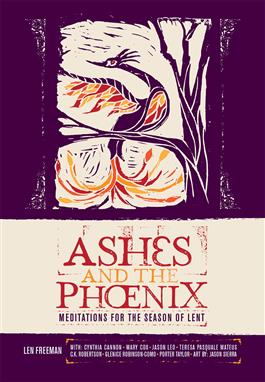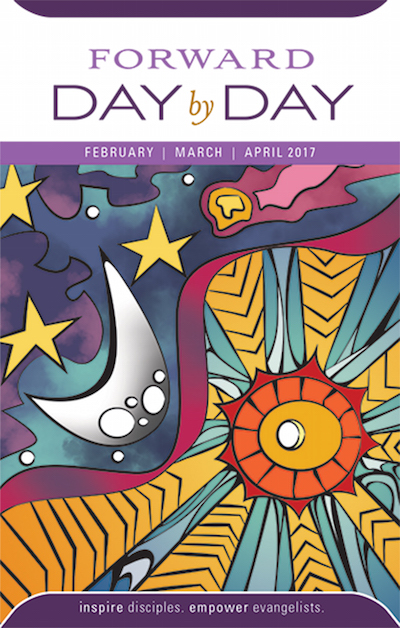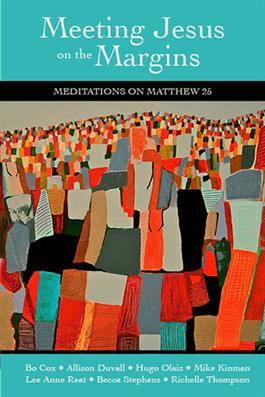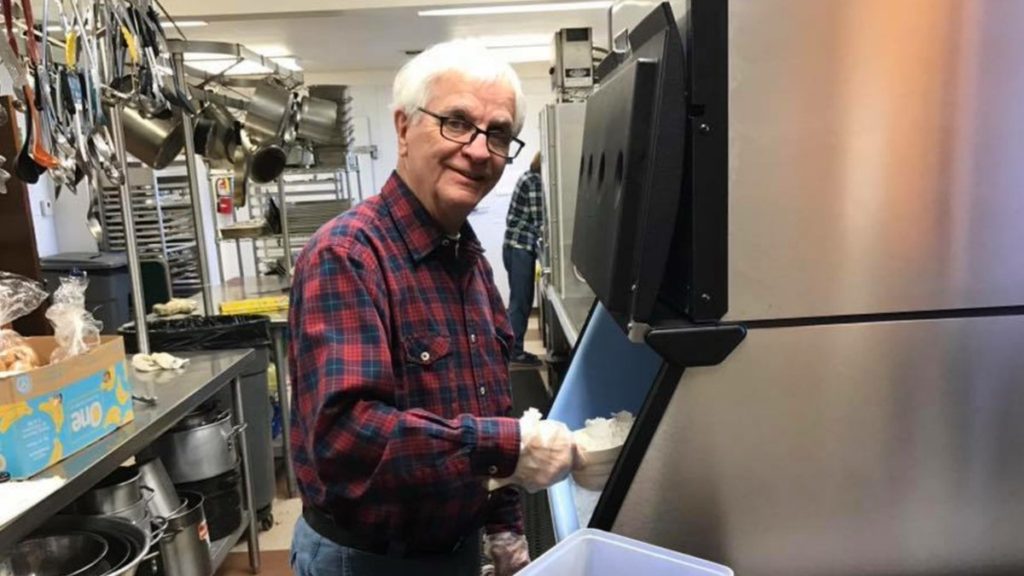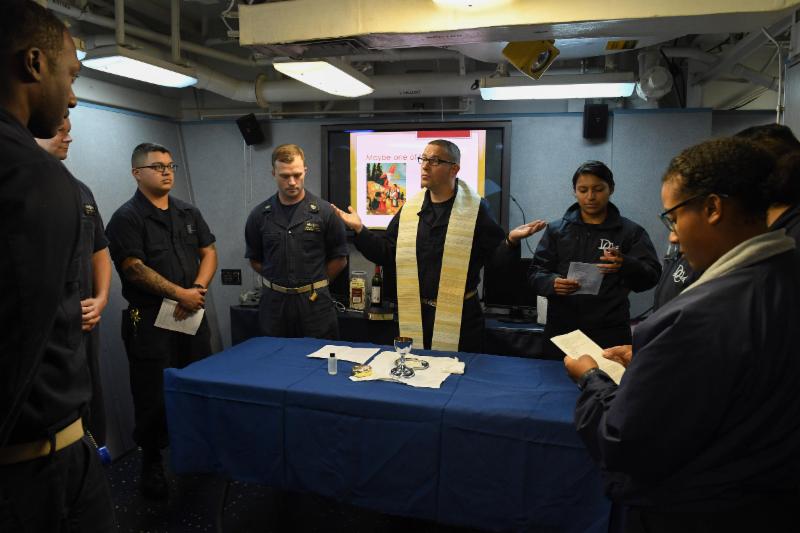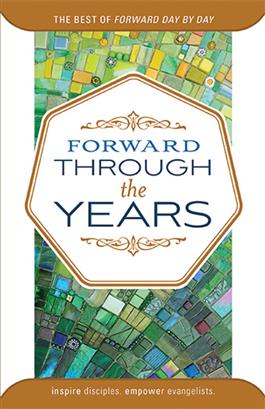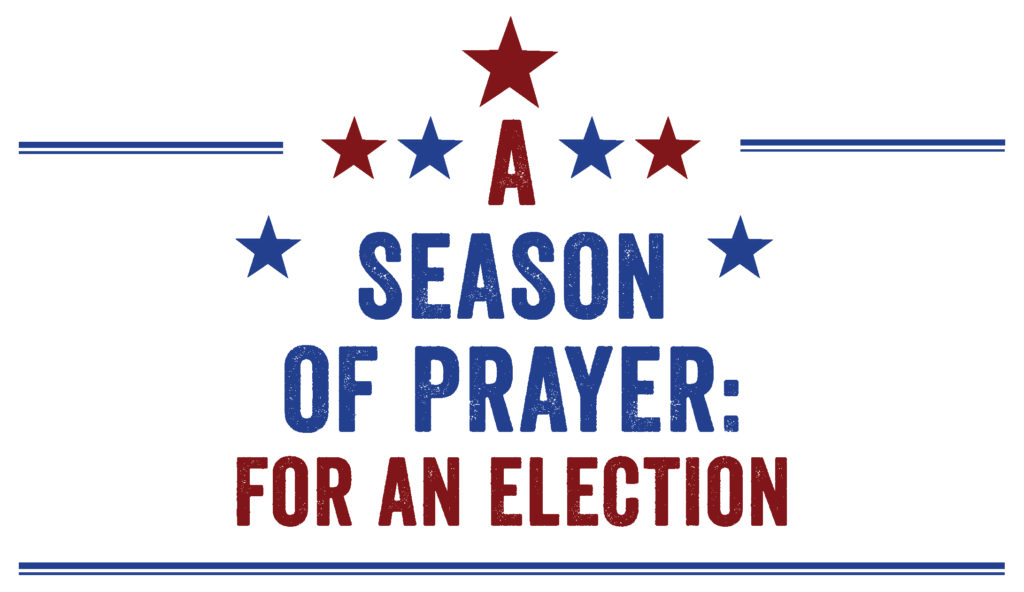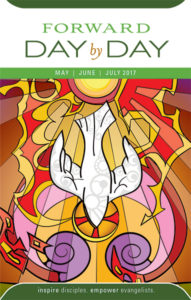
We hope you’ve been enjoying this month’s Forward Day by Day meditations by Ann Rose. We love hearing more about writers’ processes, so we recently checked in with Ann, who shared more about her writing and her daily practice, plus some wonderful stories that didn’t make it into Forward Day by Day. Enjoy!
Do you have a special place you write, or do you just write at your desk or wherever the mood strikes you?
I have a chair in our living room, across from a chest with two pottery oil candles that my husband made. Two icons are on the wall above the chest (“The Holy Trinity” and “The Dormition” icons). That is where I start each morning, candles lighted, with reading, meditation, journaling, and prayer. When I’m working on a writing project, like the Forward Day by Day meditations, I tend to sit in that chair to think, gather ideas, jot them down, and ponder them.
Sometimes I write the first draft of the meditation by hand, sitting in that chair. At some point, I move to my computer in our home office at the end of the family room, and continue to work on it. Three days a week, I teach part-time at a seminary (composition and literature). I keep index cards in my purse, and when an idea strikes me for a meditation, I jot it down at the next red light or between classes so that I won’t forget it before I get back home to my chair or computer.
Did you have a favorite meditation you wrote this month? If so, why? Conversely, did you struggle with any of the readings in particular?
One of my favorite meditations for June is the one for Friday the 16th. I didn’t grow up in a home with strong Christian teaching, but what I thought I understood from the general culture was that God wanted strong, continually joyful people, and that God showed us the right path and the best choices but wasn’t involved in a particularly intimate way with us. When I spent a year in the Ignatian Retreat in Everyday Life about 10 years ago (and after that became a co-facilitator of the retreat), I learned to put myself imaginatively into the scenes of Bible stories and later to continue the conversation with Jesus about what was happening in my interior life. Out of that came my discovery that I was loved when I wasn’t either strong or joyful, and that I could afford to be transparent with myself and with God about desolate times.
That discovery has been incredibly important to me. The meditation on June 16th is based on that idea, and the meditation on June 9th works with that theme also, using George Herbert’s lines about the broken pieces of our hearts along with our tears becoming an altar for God. Someday maybe I’ll get the chance to write on Psalm 56:8, where the psalmist asks God to “put my tears in your bottle.” The image of God’s caring so deeply about our tears that he collects them in a precious tear bottle is a profound as well as a beautiful image to me.
I don’t think I struggled with the readings so much as I struggled when I wanted to use icons or other Christian art in my meditations. Icons are important spiritual tools for me, and I also love much Western medieval Christian art in its simplicity and almost primitive nature. But it’s difficult to describe a piece of art in such a way that the meditation has the force and clarity that I feel when I am looking at the icon or fresco or oil painting or statue. In the June meditations, I used two icons (“The Holy Trinity” and “Pentecost”) and two pieces of 11th century Western art (the illuminated manuscript of Jesus in the boat in the storm and the fresco in the Bayeux Cathedral of the crucified Jesus in God’s lap), and with those illustrations that touch me so deeply, I struggled to put them into words effectively.
What do you do when you have writers’ block? How do you unstick yourself?
My usual plan is to work through the month of readings, finishing one mediation before I start thinking about the next one. On the day that I finish a draft of one, that night I read the next set of scripture readings before I go to bed, because I find that sometimes my mind keeps working during the night and I wake up with thoughts about a reading that I wasn’t conscious of when I went to sleep. The following morning, I re-read the scripture passages and go through the day trying to keep them in mind and thinking about which one draws me the most to write about it. If I do that for a couple of days and nothing strikes me as a good choice, then I move on to the next day and figure that when I eventually get back to the skipped day, one or more of the readings will jump off the page as being good material for a meditation. I do surround all of this in prayer, praying that I will be able to choose verses and stories such that many readers will relate to what I’m writing and find the meditation meaningful and helpful.
How has developing a daily devotional practice changed your life and relationships?
My daily devotional life has had a long history of development. I was drawn to start a faith journey in high school through the organization Young Life, which offered, along with large, enthusiastic meetings, small Bible study groups that were so good that I sailed through Old Testament and New Testament courses at Duke, already knowing much of the material and feeling appreciative of an academic approach to the Bible, instead of threatened by it (which many of my classmates seemed to feel). Young Life kids were encouraged to have a daily “quiet time” that consisted of “listening to God” through reading scripture, and “talking to God” through prayer. Years later I would find that dividing scripture from prayer no longer worked for me, but at the time, it was a good starting place. I became an active Presbyterian in high school and college, and the church I attended just a block from my college campus continued to instill in me the need for daily devotional practice as well as weekly Bible study at the church.
I kept up my “quiet time” until I had a full-time college teaching job and two young children, both of whom were juvenile diabetics, so our mornings were all about medical things and I struggled to keep on top of it all. After a plateau of about 10 years, my husband and I had become Episcopalians and we both went to Cursillo. Part of my renewal experience was to return to my daily prayer and study time. I remember it felt not like a discipline but like coming home.
As time went on, I began to read about and try prayer approaches like Lectio Divina and Praying with Scripture, both approaches combining scripture with prayer rather than separating them. Then about 10 years ago, I did the Ignatian Retreat in Everyday Life for a year, and that nailed down the Ignatian way of “praying with scripture” for me. I co-facilitated the retreat for a couple of years after I made my own retreat, and now I am co-facilitating it again on a regular basis.
How has a daily devotional practice changed my life and relationships? For me, it is a spiritual lifeline. It’s not a commitment that I feel I have to keep, but a time I relish to start the day. One of the key things in Ignatian spirituality is to identify the “consolations” and also the “desolations” of the day. I do this each morning for the previous day, and jot them down, imagining Jesus sitting with me and sharing both the things I’m grateful for and the things that seem dark, discouraging, frustrating, etc. Then I take an index card and jot down what I think I need to do that day. I try to make this a prayerful experience.
I used to get distracted from my prayer time as things would pop into my mind about the day ahead. So I decided to incorporate the day ahead into my prayer time instead. After making the index card for the upcoming day, I spend some time with Ignatian praying with scripture (I use the book Sacred Space, which is compiled every year by the Jesuits in Ireland), sitting in silence, and then reading. Depending on how long I have, I might read the online mediation from Frederick Buechner, the daily reading from Forward Day by Day, and a few pages from whatever author I’m currently reading–Richard Rohr, Barbara Brown Taylor, Anne Lamott, Cynthia Bourgeault, Joan Chittister, Rowan Williams, etc.
Now that I’m not working full-time, I have a much longer time in the morning on the days that I’m not heading for the seminary campus. I don’t know how I would be if I didn’t give myself this time of sensing that I’m sitting in God’s presence and pondering, reading, jotting down consolations and desolations from the previous day, listening, and just being silent, but I know it has helped me be healthier both spiritually and emotionally for a long, long time.
What’s one thing you’d like to share with the readers/FDD community that you might not have gotten to share in your meditations?
The older I get (I was born when my father was overseas serving in World War II), the more I become aware that the “teachers of deep things” in my life have been not only the predictable people like parents, college professors, and clergy. Some of those people have been profound teachers, but in addition, my “teachers of deep things” have been my own children, my husband, ordinary friends, students in my classrooms, certain scenes that have given me glimpses of the kingdom of God, several dreams, art, creation, and even architecture (I’m thinking of Durham Cathedral in northern England as I mention architecture).
I’m sure that if I revised that list a few weeks from now, I would want to add many more categories. Just last week I started making a list of specific grace-filled lessons that I had either learned or been reminded of through other people, scenes, art, creation, and so on. I am going to use part of my time this summer to work on my own personal writing project about these lessons and the way they came to me. The Ignatian perspective of “finding God in all things” has helped direct me to try to be increasingly open to experiencing God through all sorts of things that would have seemed unlikely to me when I was a younger adult.
I also studied quite a bit of medieval literature in college and graduate school, and perhaps the medieval approach to seeing life on various levels at the same time–literal, allegorical, symbolic, and mystical–has come back in my later years not as an academic concept but as a spiritual reality to help me see grace in all sorts of people and things that otherwise might seem random.
Probably all great spiritual traditions emphasize “awareness,” and for me, the awareness of the multitude of avenues by which grace has come to me in my life is very much on my mind right now–so I am happy you asked what I would like to share if I had one more thing to mention.




